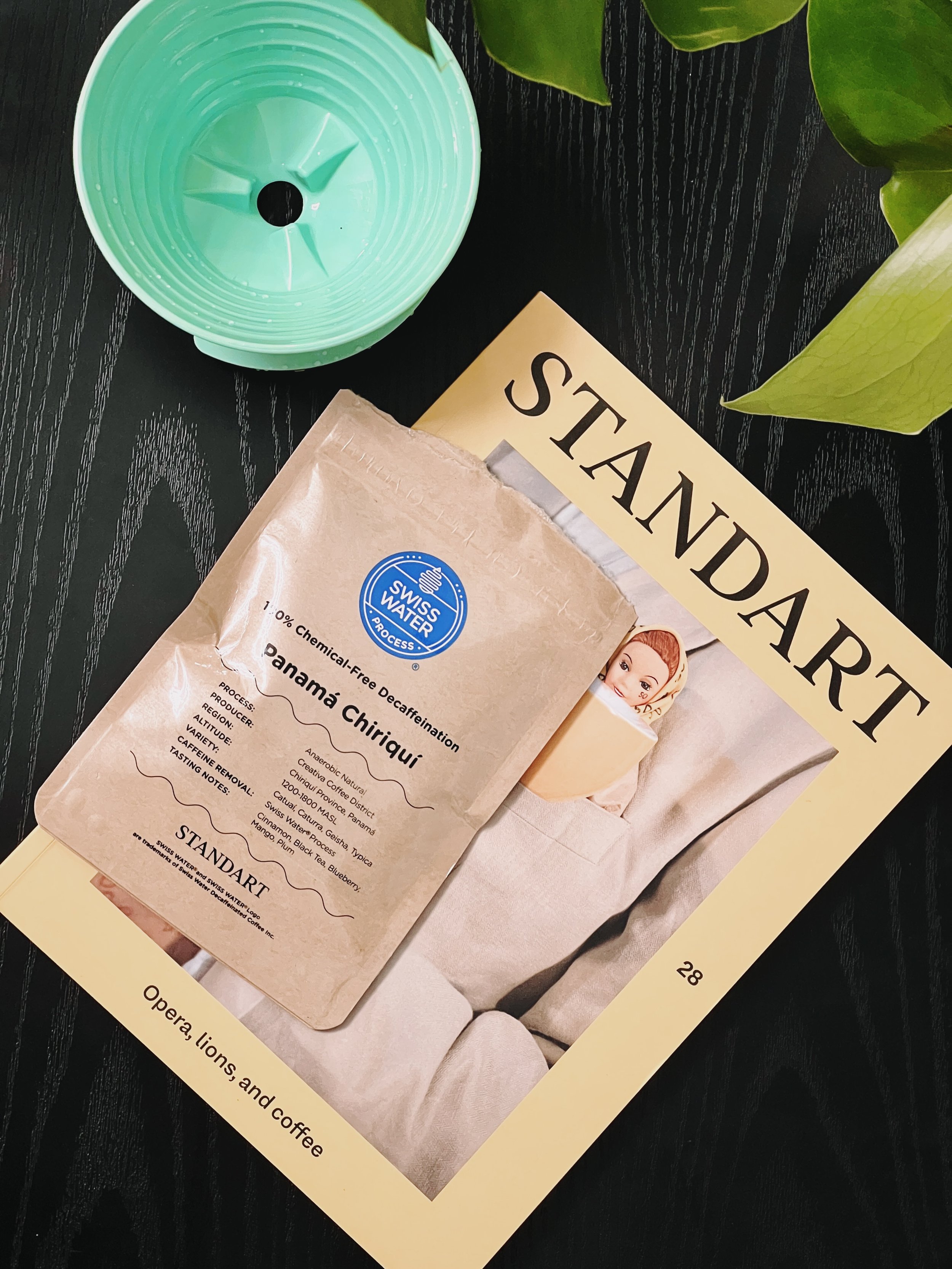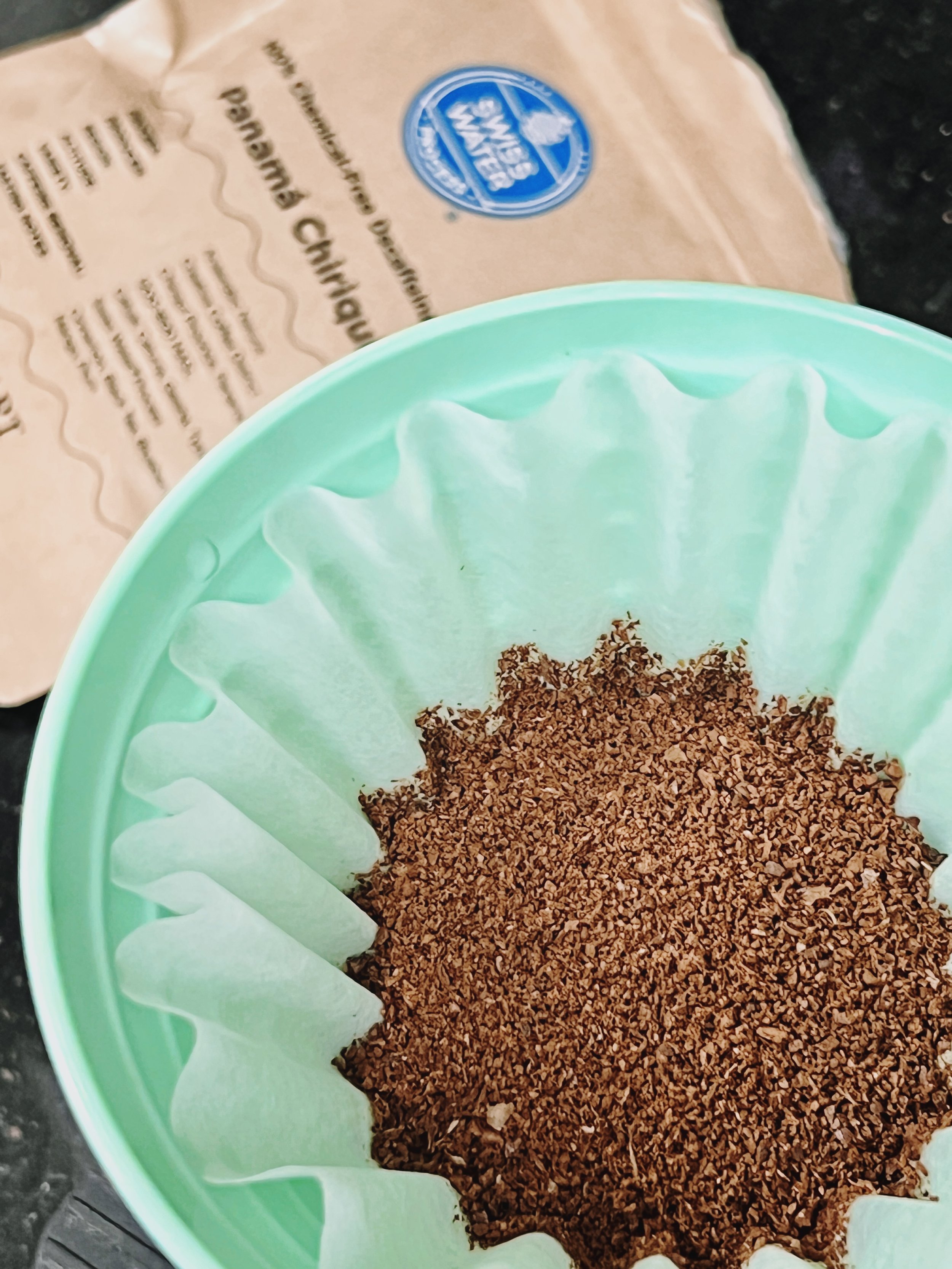Decaf coffee doesn’t have to taste bad
I feel it’s now incumbent upon me to write about the coffee that comes with every issue of Standart magazine. With #28, I was quite surprised to find a decaffeinated Panamanian blend. There’s a Geisha amongst other varieties in this coffee, exciting, but decaf made me think otherwise.
I have to say, I never needed to drink decaf until now. I am not sensitive to caffeine and I can have coffee before bedtime without it putting a dent on my sleep. But not many have this luxury and can disrupt the body’s internal clock.
You might assume that decaffeinated coffee has no caffeine, but a very small amount is present. Roughly 99.9% of the caffeine is removed. Putting some numbers into perspective, an average cup of coffee will contain about 95mg of caffeine compared to less than 1mg in decaf coffee.
How is the caffeine removed?
I found three ways caffeine is removed from coffee: the Swiss Water process being the most effective, carbon dioxide, and methyl chloride. In this post, I’ll expand on the Swiss Water Method since the subject coffee uses the Swiss Water process to eliminate caffeine. Unlike other methods, this one does not use nor add chemicals in your coffee.
The process starts by soaking green beans in pure water to create what Swiss Water calls GCE or Green Coffee Extract. The green coffee is rehydrated so that the beans reach their target moisture content to remove caffeine. If you remember, freshly harvested green beans have moisture content around 50% after which it drops to 10-12% post drying and processing.
It’s a tough time for the greens, spending 8-10 hours with GCE until there is less than 0.1% of caffeine within the green coffee. The caffeine is removed from the GCE using carbon filters. The GCE is reused and also monitored to make sure it is effective in its operation. Once 99.9% of the caffeine is removed, the coffee is dried, and shipped to the customer.
I would have probably never known I was drinking a decaf, it’s that good. Dark fruit notes with medium to heavy body translates to the perfect evening brew. I opted to brew it on the April plastic brewer using 13g of coffee to 200g of water. There is one thing that I felt lacking, the “kick”, if I must. That, my friends, is the soul of coffee, and without it, it’s not the same anymore.


